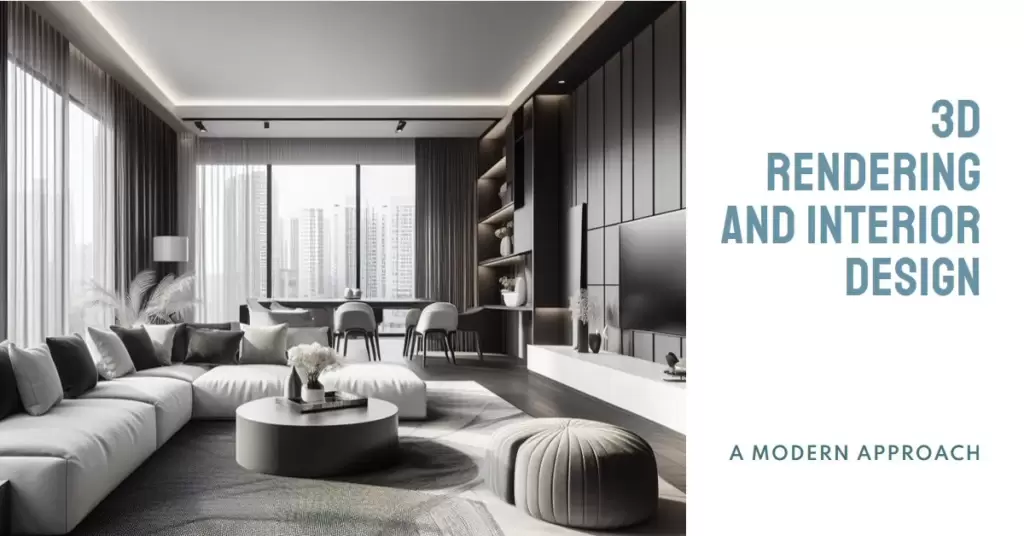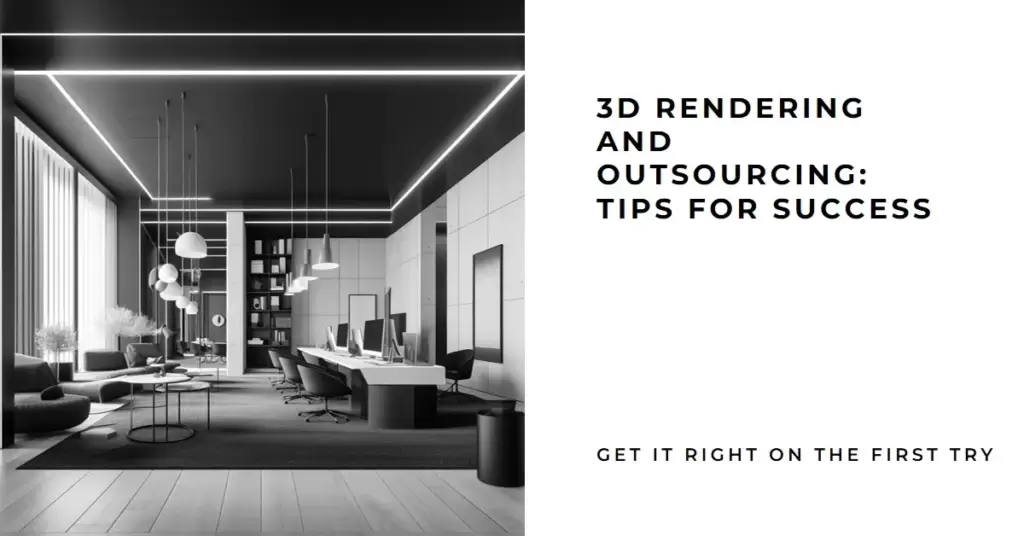
Table of Contents
Embarking on the journey of the interior design process involves a meticulous process of conceptualization, planning, and execution. In this comprehensive guide, we explore the symbiotic relationship between 3D rendering and the interior design process, uncovering how cutting-edge visualization technology enhances each stage of this creative journey.
Section 1: Visualization Prowess in Conceptualization
Title: Envisioning Excellence: The Role of 3D Rendering in Conceptualization
At the inception of the interior design process lies the conceptualization phase, where ideas take shape and visions come to life. This section delves into how 3D rendering acts as a powerful tool to translate abstract concepts into visual representations. Designers leverage 3D rendering to create realistic mock-ups, allowing clients to envision the potential of a space with unparalleled clarity.
By providing a visual narrative, 3D rendering facilitates effective communication between designers and clients. The ability to explore various design concepts in a virtual space streamlines decision-making and ensures that the envisioned design aligns seamlessly with the client’s preferences and expectations.
Section 2: Precision Planning with 3D Models
Title: Precision Prowess: Planning Interior Spaces with 3D Models
Moving into the planning phase, interior designers rely on intricate detailing and precision. This section explores how 3D rendering aids designers in creating detailed models of interior spaces. These models not only showcase the spatial layout but also integrate design elements such as furniture, lighting, and color schemes with unprecedented accuracy.
Designers can experiment with different layouts and configurations in a virtual environment, refining their vision before the physical implementation begins. The precision offered by 3D models enhances the overall planning process, ensuring that every aspect of the design aligns harmoniously with the intended aesthetic.
Section 3: Realism Redefined in Material Selection
Title: Material Marvels: Elevating Realism in 3D Rendering for Material Selection
Selecting materials is a pivotal aspect of the interior design process, influencing both the aesthetic and functional aspects of a space. This section highlights how 3D rendering enables designers to explore a vast array of materials virtually. From luxurious fabrics to intricate wall textures, the realism achieved in 3D rendering allows designers to make informed decisions about materials that resonate with the overall design concept.
Designers can assess how different materials interact with lighting conditions, creating a nuanced understanding of how the chosen materials contribute to the ambiance of the space. The ability to visualize materials in a lifelike environment streamlines the material selection process, ensuring that the final design reflects the desired tactile and visual qualities.
Section 4: Lighting Dynamics in Design
Title: Radiant Realism: Harnessing Lighting Dynamics in 3D Rendering for Design
Lighting plays a transformative role in interior design, influencing the mood and atmosphere of a space. This section explores how 3D rendering allows designers to experiment with various lighting scenarios virtually. From natural sunlight streaming through windows to the warm glow of artificial lighting, designers can fine-tune the lighting dynamics to achieve the desired ambiance.
By simulating real-world lighting conditions, designers gain insights into how different fixtures and arrangements affect the overall visual appeal of a space. This nuanced understanding of lighting dynamics empowers designers to create environments that are not only aesthetically pleasing but also functionally optimized.
Section 5: Client Collaboration and Approval
Title: Collaborative Harmony: 3D Rendering as a Catalyst for Client Approval
Client collaboration is integral to the interior design process, and this section explores how 3D rendering acts as a catalyst for seamless communication and approval. Designers can present realistic visualizations to clients, allowing them to actively participate in the decision-making process. This collaborative approach fosters a sense of transparency and ensures that the final design aligns with the client’s vision and expectations.
Through 3D rendering, clients can provide feedback on specific elements of the design, enabling designers to make real-time adjustments. This iterative collaboration not only streamlines the approval process but also cultivates a sense of client satisfaction and confidence in the envisioned design.
Section 6: Budgeting with Visual Precision
Title: Budgetary Precision: Utilizing 3D Rendering for Cost-effective Interior Design
Navigating the financial aspects of interior design is a delicate balance, and this section explores how 3D rendering contributes to budgetary precision. Designers can create virtual representations that accurately reflect the proposed design, allowing clients to visualize the final result and make informed decisions about budget allocations.
By presenting a detailed visual breakdown of the design elements, designers and clients can collaboratively assess where investments will have the most significant impact. This transparency in the budgeting process ensures that financial resources are allocated strategically, maximizing the value of the interior design project.
Section 7: Construction Streamlined through 3D Visualization
Title: Streamlined Construction: 3D Rendering’s Impact on the Building Phase
As the interior design process transitions to the construction phase, this section explores how 3D rendering streamlines the implementation of the design. Detailed 3D models serve as precise references for contractors and builders, reducing the likelihood of misinterpretations and errors during the construction process.
Designers can use 3D rendering to create construction documentation, including detailed floor plans and elevation drawings. This comprehensive approach enhances communication between designers and builders, ensuring that the envisioned design is executed with accuracy and efficiency.
Section 8: Marketing and Presentation Excellence
Title: Aesthetic Allure: Elevating Marketing and Presentations with 3D Rendering
Marketing the final design to potential clients or stakeholders is a critical aspect of the interior design process. This section highlights how 3D rendering enhances marketing efforts by providing visually striking presentations and renderings. These materials become powerful tools for designers to showcase their expertise and attract new clients.
Designers can create immersive presentations, virtual walkthroughs, and captivating visualizations that convey the essence of the design. The photorealistic quality achieved through 3D rendering elevates the marketing collateral, leaving a lasting impression on clients and stakeholders.


Section 9: Future Trends: 3D Rendering and Evolving Design Processes
Title: Shaping Tomorrow: Anticipating Future Trends in 3D Rendering and Design
As technology continues to advance, this section speculates on the future trends and innovations in 3D rendering that will further shape the interior design process. From augmented reality applications to real-time rendering capabilities, designers can anticipate an evolving landscape that offers new possibilities for creativity, collaboration, and efficiency.
By staying abreast of emerging trends in 3D rendering technology, interior designers can position themselves at the forefront of innovation, leveraging cutting-edge tools to enhance the overall design process and deliver unparalleled results.


